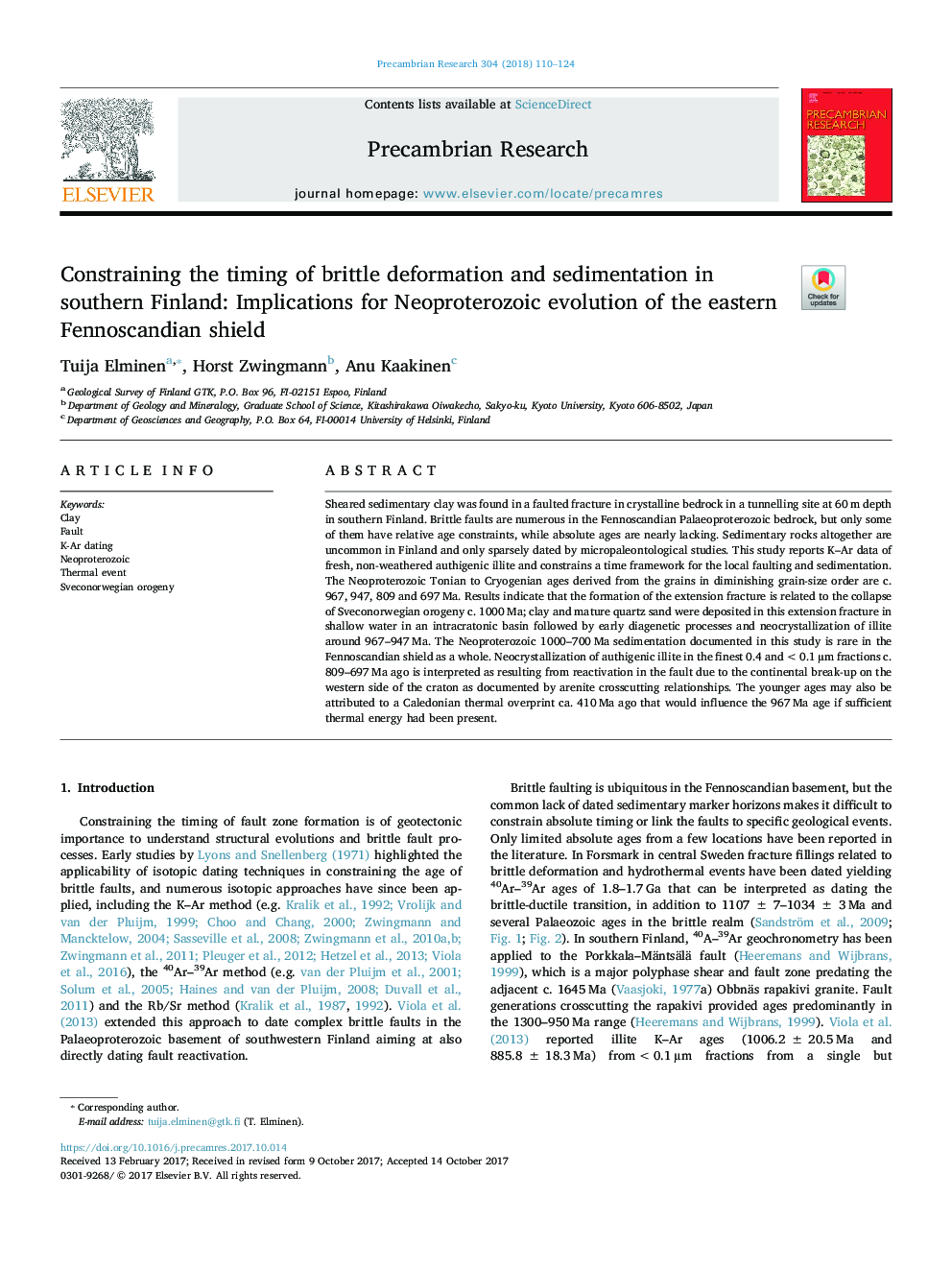| Article ID | Journal | Published Year | Pages | File Type |
|---|---|---|---|---|
| 8912700 | Precambrian Research | 2018 | 15 Pages |
Abstract
Sheared sedimentary clay was found in a faulted fracture in crystalline bedrock in a tunnelling site at 60â¯m depth in southern Finland. Brittle faults are numerous in the Fennoscandian Palaeoproterozoic bedrock, but only some of them have relative age constraints, while absolute ages are nearly lacking. Sedimentary rocks altogether are uncommon in Finland and only sparsely dated by micropaleontological studies. This study reports K-Ar data of fresh, non-weathered authigenic illite and constrains a time framework for the local faulting and sedimentation. The Neoproterozoic Tonian to Cryogenian ages derived from the grains in diminishing grain-size order are c. 967, 947, 809 and 697â¯Ma. Results indicate that the formation of the extension fracture is related to the collapse of Sveconorwegian orogeny c. 1000â¯Ma; clay and mature quartz sand were deposited in this extension fracture in shallow water in an intracratonic basin followed by early diagenetic processes and neocrystallization of illite around 967-947â¯Ma. The Neoproterozoic 1000-700â¯Ma sedimentation documented in this study is rare in the Fennoscandian shield as a whole. Neocrystallization of authigenic illite in the finest 0.4 and <0.1â¯Âµm fractions c. 809-697â¯Ma ago is interpreted as resulting from reactivation in the fault due to the continental break-up on the western side of the craton as documented by arenite crosscutting relationships. The younger ages may also be attributed to a Caledonian thermal overprint ca. 410â¯Ma ago that would influence the 967â¯Ma age if sufficient thermal energy had been present.
Related Topics
Physical Sciences and Engineering
Earth and Planetary Sciences
Geochemistry and Petrology
Authors
Tuija Elminen, Horst Zwingmann, Anu Kaakinen,
